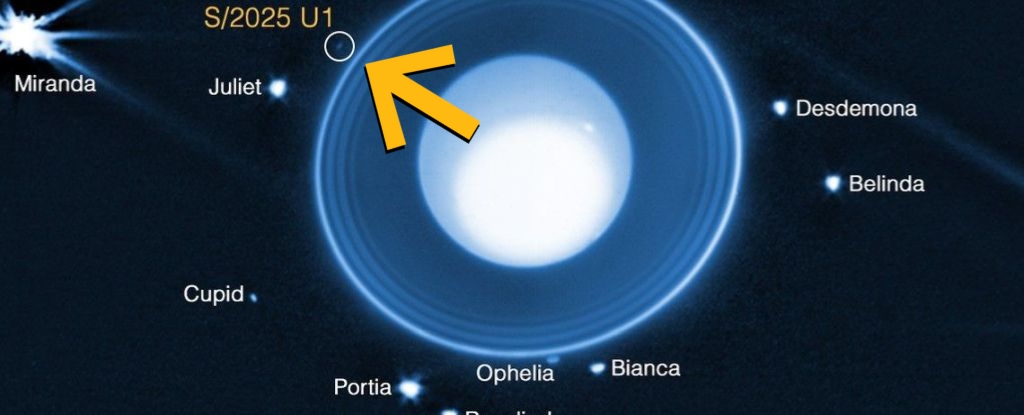
A new discovery has expanded the known number of moons orbiting Uranus to 29. The James Webb Space Telescope (JWST) identified a previously unseen moon on February 2, 2025. This tiny celestial body, measuring approximately 10 kilometers (6 miles) in diameter, is located outside the planet’s faint rings and was undetected even by the Voyager 2 probe when it flew past Uranus in 1986.
The newly identified moon, designated S/2025 U1, underscores the complexity of Uranus’s moon system. Matthew Tiscareno, a planetary scientist at the SETI Institute, stated, “No other planet has as many small inner moons as Uranus, and their complex inter-relationships with the rings hint at a chaotic history that blurs the boundary between a ring system and a system of moons.” The discovery suggests that even more moons may lie hidden within the Uranian system.
JWST’s near-infrared camera, NIRCam, spent over six hours observing Uranus and its surroundings, leading to the identification of S/2025 U1. This moon orbits at a distance of 56,250 kilometers from the planet’s center, nestled among 13 other small moons that orbit within the path of the larger moon Miranda. Its nearly circular orbit implies that it likely formed in its current location, positioned between the moons Ophelia and Bianca.
The tiny moon has yet to receive a formal name. Traditionally, moons of Uranus are named after characters from the works of William Shakespeare or Alexander Pope, so a poetic designation is anticipated.
Looking to the future, Maryame El Moutamid, an astronomer at the Southwest Research Institute, emphasized the significance of this discovery. “The discovery of this moon underscores how modern astronomy continues to build upon the legacy of missions like Voyager 2, which flew past Uranus on January 24, 1986, and gave humanity its first close-up look at this mysterious world,” she noted. “Now, nearly four decades later, the James Webb Space Telescope is pushing that frontier even farther.”
The identification of S/2025 U1 not only adds to the growing catalogue of Uranus’s moons but also highlights the ongoing advancements in astronomical research. This discovery exemplifies how contemporary technology can unveil the intricacies of our solar system and enhance our understanding of celestial bodies that have long remained enigmatic.







